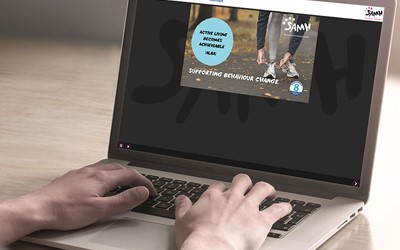How to Master Curating Your eLearning Content
E-learning is the future of learning, but creating your own digital learning content program can be tough. There are so many things that go into making an effective eLearning course and not knowing where to start could mean it will never reach its full potential or even worse - fail before launch!
Posted 26 January 2022
We've been developing eLearning content for over 25 years and we know that there are many different scenarios out in the world of learning! In this blog you'll find some handy tips which will help you get your content ready to publish as soon as possible and make sure it's always current with what people want or need from their training programs.
The power of mind mapping
Mind maps are a great way to organise and present information, they can be used for many purposes. One of the key benefits is that you get an idea on where everything fits in during planning- this helps with chaotic thoughts!
Mind maps are:
- Quick to create
- Useful to help put things in perspective
- A great tool for helping easily identify potential gaps in your content
- Effective in helping you shape your module structure
By creating a mind map, it might help you, as the author, to ensure the content you’re creating will benefit your target personas.
Know your personas for learning
To create engaging content, you need to know who will be reading it. That's why a target persona for your learners is so important! It helps visualize them as people and provides insight into their demographics such as age or gender - which can influence how they learn. The more refined these personas are – e.g. including preferences of activities outside education too - the easier creating useful material becomes.
Developing Learning Outcomes
One of the trickiest parts about developing an eLearning course is figuring out what outcomes you want your learners to achieve. It's often not as simple as it seems. Most people or companies know they want their learner to learn by doing the course, but actually articulating tangible outcomes takes some thought. Learning outcomes are a statement of what the learners will be able to do when they have completed each module. You may want to think about them as the moral of the story.
There is a need to make connections between the learning outcomes and wider goals of an entire course. Learning should be engaging with this in mind, as it will help learners understand what they're learning about more clearly while also encouraging them not to just memorise information but apply their skillset through practical application or reflective thinking. It’s worth developing 2 or 3 learning outcomes for each module.
Writing effective module content
It can be difficult to know what content should go into an eLearning course. However, one thing that every successful program has in common is a solid foundation - and this includes knowing which messages are most important for learners of your program's material (key points closely tied into their learning objectives).
One of the biggest traps we see content curators fall into is overloading the learner with lots of information, regardless of whether they need it or not. A helpful way to think about the prioritisation of content is:
- Must Know: This is the essential or fundamental skills or knowledge that is considered imperative to understanding.
- Need to know: This is the less imperative knowledge and skills, although may become a ‘Must Know’ later down the line.
- Nice to know: This is usually information or processes that add substance or interest to a subject or skill. They may be missed entirely without risking the learner’s progression through basic skills.
We all know how frustrating it is when we have to read through pages and pages of text without any breaks. This can be really hard on our eyes, especially if the content is dense or filled with details that aren't important for what you're trying to say! We recommend 250-300 word blocks per online page as an optimum amount - this provides just enough space so there's no temptation into browsing rather than focusing fully upon your message/idea which should always come first in anything educational.
How to develop scenarios
Scenarios and case studies are proven methods for learners to connect with the subject matter on a more personal level. Scenarios allow them to see how it ties into real-world situations, which may be useful in relation to their job role.
These don't need to be long or detailed, as keeping things simple will produce the best results! You can also try flipping the perspectives, constructing the scenario from the perspective of someone other than the learner. Depending on the content, scenario, and the authoring tool, there are different ways to present this information beneficially to a learner.
We can help
We're here to help you master the art of eLearning content curation. Our Instructional Designers can create and develop your course, highlight any possible gaps in knowledge before it's too late (and save yourself some headaches!), or even go through formatting standards with care. Why not get in touch and arrange a consultation, we would love to help you start your eLearning journey on the right foot.
Recent Posts
Turning AI into potential gainSeamless HR Integration: Streamlining workforce enrolment with eCom's eNet Product Suite
eCom Learning Solutions: Staying ahead in a constantly evolving landscape
Is your work changing, or just your tools? A question for the modern workforce
What is competency? And why it matters in the workplace


